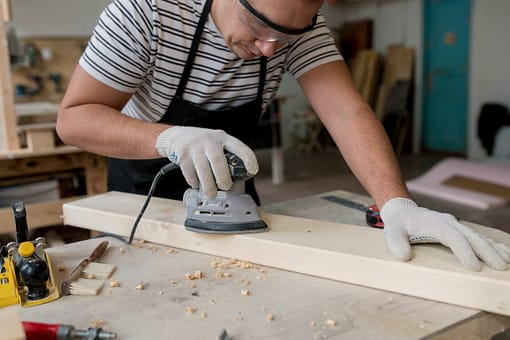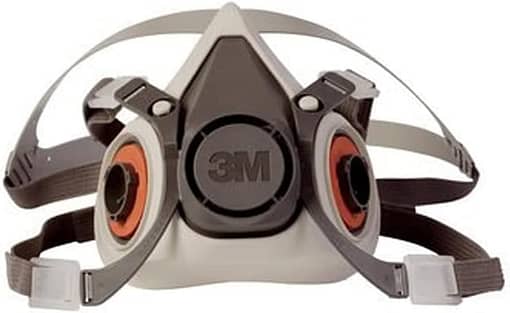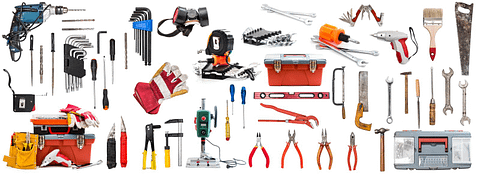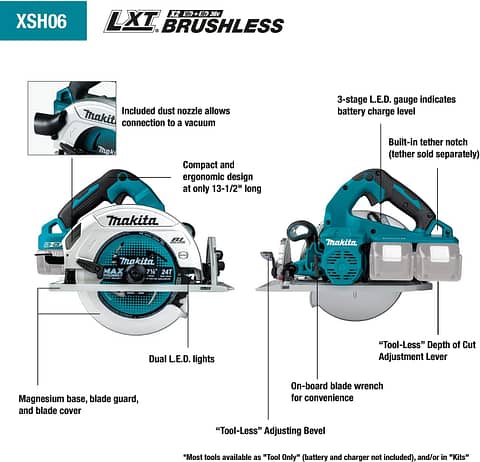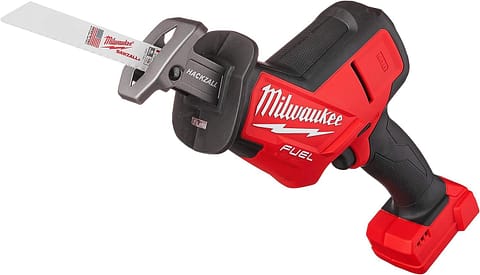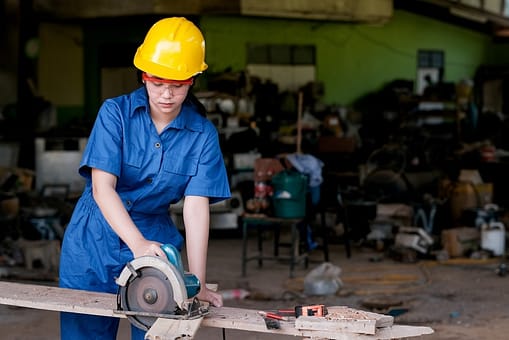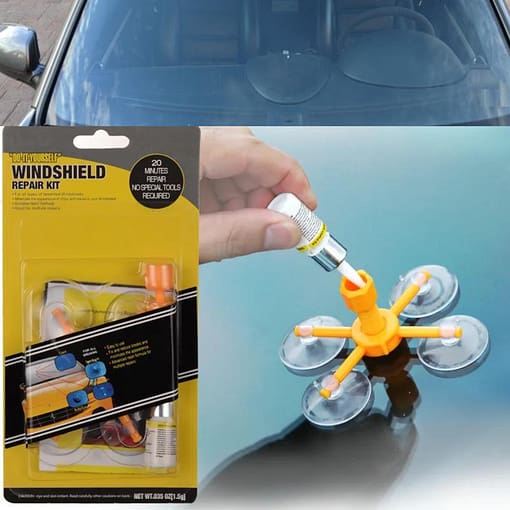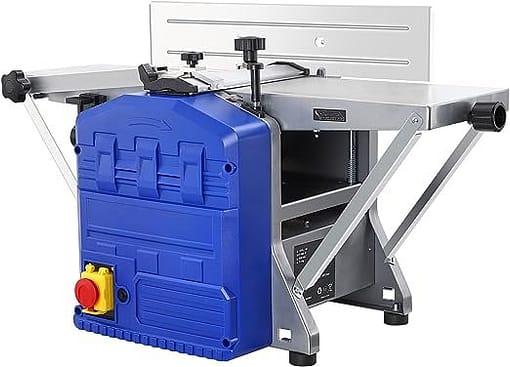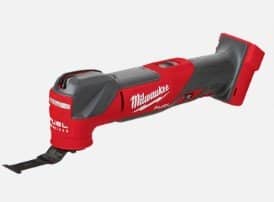In the bustling world of workshops, where creativity and craftsmanship collide, one tool has long reigned supreme. It is the unsung hero, the trusty companion of the artisans and builders alike. Yes, we are talking about none other than the humble but mighty hammer. With its versatile nature and ability to tackle a wide range of tasks, the hammer has solidified its position as the most used tool in the workshop. Whether it’s driving nails, removing stubborn screws, or even shaping materials, the timeless hammer continues to prove its indispensability to craftsmen worldwide. Join us as we explore the enduring legacy and importance of this iconic tool in the workshop.
Power Tools
Drill Machine
One of the most essential power tools in any workshop is the drill machine. It is a versatile tool that can be used for a wide range of tasks, including drilling holes in various materials like wood, metal, and plastic. With different drill bits, you can also use it for driving screws or bolts into different surfaces. The drill machine’s speed can usually be adjusted, allowing you to drill holes at different depths and with different degrees of precision. Whether you’re a professional or a DIY enthusiast, a reliable drill machine is a must-have tool in your workshop.
Circular Saw
The circular saw is another powerful tool that is commonly found in workshops. It is a handheld cutting tool that uses a circular blade to make straight cuts through a variety of materials, such as wood, plywood, and metal. It is especially useful for making long, straight cuts or for cutting large sheets of material. Circular saws come in different sizes and with various options for blade types, making them versatile and suitable for different cutting applications. Whether you’re building furniture, framing a house, or working on a woodworking project, a circular saw will greatly help you in achieving clean and accurate cuts.
Angle Grinder
An angle grinder is a versatile and powerful tool that can handle a wide range of tasks in the workshop. It is equipped with a rotating abrasive disc that can be used for cutting, grinding, polishing, and sharpening various materials, including metal, stone, and concrete. The angle grinder’s compact size makes it easy to handle, allowing you to reach tight spaces and corners. It is an essential tool for tasks such as removing rust or paint, cutting tiles or pipes, and shaping or smoothing rough edges. An angle grinder is a valuable tool that provides versatility and precision for many workshop projects.
Hand Tools
Hammer
The hammer is one of the most basic and widely used hand tools in any workshop. It consists of a handle and a heavy metal head, usually made of steel, that is used to deliver an impact force to drive nails or pins into various materials. Hammers come in different sizes and weights, allowing you to choose the right one for your specific needs. Besides driving nails, hammers can also be used for tasks like removing nails, breaking or chipping materials, and shaping metal or wood. A versatile tool that no workshop should be without, the hammer is a reliable companion for a wide range of projects.
Screwdriver
A screwdriver is an indispensable tool in any workshop, as it is used for the simple yet crucial task of tightening or loosening screws. It consists of a handle and a shaft with a flat, Phillips, or Torx head that matches the corresponding screw’s shape and size. Screwdrivers come in different sizes, with some featuring interchangeable heads to accommodate various screw types. With a good grip and proper torque, a screwdriver allows you to securely fasten screws, assemble furniture, and work with electrical components. Whether you’re assembling a piece of furniture or working on intricate electronics, a reliable screwdriver is a must-have tool in your workshop.
Wrench
A wrench, also known as a spanner, is a versatile hand tool used for turning nuts and bolts. It consists of a handle and a jaw or a socket that grips onto the fastener. With the right size and type of wrench, you can easily tighten or loosen fasteners of different sizes or shapes. Wrenches come in various forms, including adjustable wrenches, combination wrenches, and socket wrenches. They are essential tools in any workshop, enabling you to assemble furniture, repair vehicles, or work on plumbing installations. The versatility of wrenches makes them a valuable addition to your collection of hand tools.
Pliers
Pliers are hand tools that are designed for gripping, bending, and cutting various materials. They consist of two handles connected by a pivot, allowing them to exert force on objects placed between their jaws. Depending on their design, pliers can serve different purposes in the workshop, such as gripping and twisting wires, cutting cables or nails, and bending or straightening metal components. Pliers come in different variations, including slip-joint pliers, needle-nose pliers, and locking pliers. Their versatility and ability to provide a strong grip make them essential tools for tackling many tasks in the workshop.
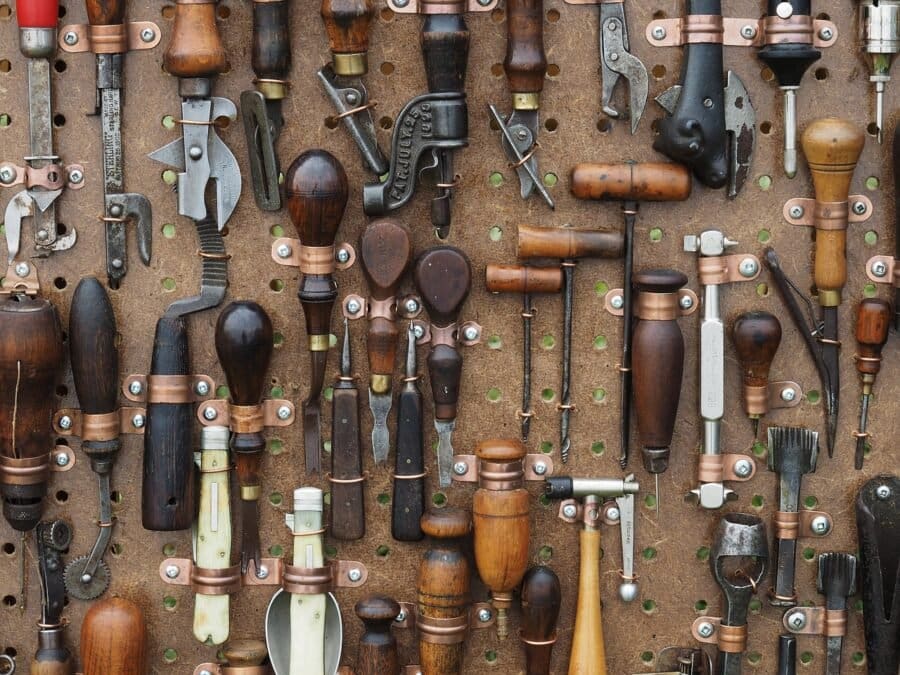
Measuring Tools
Tape Measure
A tape measure is a simple yet indispensable tool that is used for measuring length, width, and height. It consists of a flexible metal strip that is marked with measurement increments and can be extended or retracted with a spring mechanism. Tape measures come in various lengths and widths, allowing you to measure small or large distances with ease. They are commonly used in woodworking, construction, and crafts, ensuring accurate measurements for cutting materials or determining the dimensions for a project. A reliable tape measure is an essential tool that every workshop should have.
Level
A level is a tool that is used to determine whether a surface or object is horizontal or vertical. It typically consists of a straight bar with one or more bubble vials that contain liquid and an air bubble. By placing the level on a surface, you can check if it is perfectly level or if it slopes in any direction. Levels come in different lengths and types, from torpedo levels for smaller tasks to larger spirit levels for more extensive projects. Whether you’re hanging shelves, aligning tiles, or installing cabinets, a level ensures precision and accuracy in your work.
Square
A square is a measuring tool that is used to determine if a corner or edge is at a right angle, meaning it forms a 90-degree angle. It consists of two straight edges, one longer and one shorter, that meet at a right angle. Squares come in different sizes and materials, such as metal or plastic. They are essential for woodworking, metalworking, and construction projects, allowing you to ensure that cuts, joints, and edges are square and accurately aligned. With a reliable square, you can achieve clean and precise results in your workshop projects.
Cutting Tools
Utility Knife
A utility knife, also known as a box cutter or a retractable knife, is a versatile cutting tool that can handle a wide range of materials. It consists of a handle and a replaceable razor-sharp blade that can be extended or retracted for safety. Utility knives are commonly used for tasks like cutting cardboard, opening packages, trimming materials, and scoring or slicing through various surfaces. They are a handy tool for any workshop, offering precision and convenience in cutting tasks. With the right technique and a sharp blade, a utility knife is an indispensable tool in your toolkit.
Chisel
A chisel is a cutting tool with a sharp metal blade that is designed for shaping, carving, or cutting hard materials like wood, stone, or metal. It consists of a handle and a blade that is beveled on one side and flat on the other. Chisels come in different sizes and shapes, allowing you to choose the right one for your specific task. They are commonly used in woodworking, carving intricate details, or shaping joints and mortises. With a mallet or a hammer, you can apply controlled force to the chisel, creating precise cuts and shapes. A chisel is an invaluable tool for any craftsman or woodworking enthusiast.
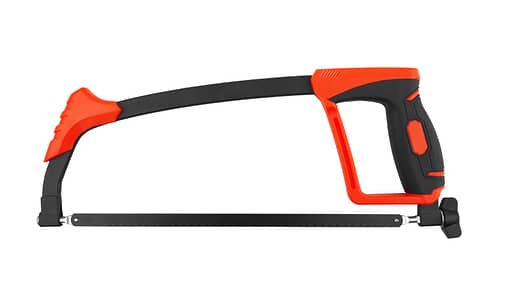
Hacksaw
A hacksaw is a cutting tool that is used for cutting through various materials, most commonly metal and plastic. It consists of a frame with a removable blade that has small, sharp teeth. Hacksaws are designed to cut by pushing and pulling the blade across the material, creating a back-and-forth sawing motion. The blade’s teeth can be adjusted to achieve different cutting speeds or to cut through different materials. Hacksaws are commonly used in metalworking, plumbing, or DIY projects, providing a simple and effective way to make accurate cuts. With a hacksaw, you can cut through pipes, metal rods, or plastic materials with ease.
Fastening Tools
Nail Gun
A nail gun, also known as a pneumatic nailer or a cordless nailer, is a power tool that is used for driving nails into various materials. It is a time-saving and efficient alternative to using a hammer and nails manually. Nail guns come in different types and sizes, ranging from small brad nailers to heavy-duty framing nailers. They are commonly used in construction, carpentry, and woodworking projects, ensuring quick and secure fastening of materials. With the right nail gun and appropriate nails, you can save valuable time and effort in your workshop tasks.
Staple Gun
A staple gun is a handheld tool that is used for fastening materials together using staples. It is similar to a nail gun but is specifically designed for driving staples into surfaces. Staple guns come in different varieties, such as manual or electric, and they are commonly used for tasks like upholstery, carpet installation, woodworking, and crafts. By simply pressing the trigger, you can quickly and securely fasten materials, providing a neat and professional finish. A staple gun is a versatile tool that can greatly speed up your workshop projects.
Screwdriver Set
A screwdriver set is a collection of screwdrivers in different sizes and types, allowing you to handle a wide range of screws and fasteners. Screwdriver sets usually include both flathead and Phillips head screwdrivers, as these are the most commonly used screw types. With a variety of sizes, you can choose the right screwdriver for your specific task, ensuring a secure and tight fastening. Screwdriver sets are essential in any workshop, as they provide the flexibility and convenience of having the right tool for every screw or fastener you encounter.
Sanding and Abrasive Tools

Random Orbital Sander
A random orbital sander is a power tool that is used for sanding various surfaces to achieve a smooth and even finish. It consists of a motorized body with a round sanding pad that moves in an orbital motion, combining random orbits with a rotation. This unique movement pattern helps to prevent swirl marks or scratches on the surface being sanded. Random orbital sanders are commonly used in woodworking, furniture refinishing, and DIY projects, providing efficient and consistent sanding results. With different grit sandpaper discs, you can achieve different levels of smoothness and prepare surfaces for painting or staining.
Sandpaper
Sandpaper is an abrasive material that is used for sanding surfaces by hand or with power tools. It consists of a backing material, such as paper or fabric, that is coated with tiny abrasive particles, like aluminum oxide or garnet. Sandpaper comes in different grits, ranging from coarse to fine, with lower numbers representing coarser grit and higher numbers representing finer grit. Coarser grit sandpaper is used for removing material or shaping surfaces, while finer grit sandpaper is used for smoothing or finishing. Sandpaper is an essential tool in any workshop that deals with woodworking, metalworking, or general repairs.
Wire Brush
A wire brush is a handheld tool that is used for cleaning, rust removal, or surface preparation. It consists of bristles made of rigid wire, which can be stainless steel, brass, or carbon steel. Wire brushes come in different shapes and sizes, and they are commonly used in metalworking, welding, and automotive projects. They are ideal for removing rust, paint, or debris from metal surfaces, as well as for cleaning welds or preparing surfaces for welding. With a wire brush, you can achieve a clean and smooth surface, ready for further treatment or finishing.
Clamping and Holding Tools

Vise
A vise is a mechanical device that is used to hold objects firmly in place during various workshop tasks. It consists of two parallel jaws, one fixed and one movable, that can be tightened using a screw or a lever mechanism. Vises come in different sizes and types, such as bench vises, pipe vises, or woodworking vises. They provide a secure grip on materials, allowing you to saw, drill, file, or shape them without the risk of movement. A vise is an essential tool in any workshop, as it ensures stability and precision in a wide range of tasks.
Clamps
Clamps are versatile tools that are used to hold objects together or to secure materials during gluing, clamping, or assembly. They have two jaws that can be adjusted, tightened, and released as needed. Clamps come in various sizes and types, including C-clamps, bar clamps, pipe clamps, or spring clamps. They are commonly used in woodworking, furniture making, and construction projects to hold pieces together while the adhesive dries or during assembly. With clamps, you can achieve accurate and secure connections, ensuring the success of your workshop projects.
Pliers with Clamps
Pliers with clamps, also known as locking pliers or vice-grip pliers, are a unique type of pliers that can be locked into position, providing a secure grip on objects. They consist of two handles that are connected by a pivot and feature a locking mechanism that keeps the jaws clamped. Locking pliers come in different sizes and with different jaw styles, such as curved jaws or needle-nose jaws. They are useful for holding, clamping, or gripping objects of various shapes or sizes, especially in situations where a continuous grip and strong holding force are required. Pliers with clamps are versatile tools that can assist you in a wide range of workshop tasks.
Painting Tools
Paintbrush
A paintbrush is a basic tool that is used for applying paint or other coatings onto surfaces. It consists of a handle and bristles that are usually made of synthetic or natural fibers, such as nylon or hog hair. Paintbrushes come in different sizes and shapes, allowing you to choose the right brush for the specific paint application. They are commonly used in painting walls, furniture, or artwork, providing control and precision in applying paint. With a good paintbrush and proper technique, you can achieve smooth and even coverage, enhancing the quality of your workshop projects.
Roller
A paint roller is a painting tool that consists of a handle and a cylindrical foam or fabric cover. It is used for applying paint quickly and evenly on larger surfaces, such as walls or ceilings. Paint rollers come in different sizes and nap lengths, allowing you to choose the appropriate roller cover for the specific surface and paint type. They are efficient tools that can cover large areas in a short amount of time, providing a smooth and uniform finish. With a paint roller, you can tackle painting tasks in your workshop with ease and efficiency.
Paint Sprayer
A paint sprayer is a power tool that is used for applying paint or other coatings in a fine mist or spray pattern. It consists of a motorized body and a nozzle that atomizes the paint and propels it onto the surface. Paint sprayers come in different types, such as airless sprayers, HVLP sprayers, or compressed air sprayers. They are commonly used in professional painting, automotive refinishing, or large-scale projects, providing an efficient and high-quality finish. With a paint sprayer, you can achieve fast and even coverage, saving both time and effort in your workshop painting tasks.
Safety Tools
Safety Glasses
Safety glasses are an essential safety tool that protects your eyes from potential hazards in the workshop. They are designed to shield your eyes from flying debris, such as wood chips, metal shavings, or dust particles, as well as from chemical splashes or impacts. Safety glasses come in different styles, including wraparound or prescription glasses, and they often feature impact-resistant lenses. By wearing safety glasses, you can prevent eye injuries and ensure clear vision while working on various tasks in the workshop.
Ear Protection
Ear protection, such as earmuffs or earplugs, is necessary to protect your hearing from loud noises or prolonged exposure to high levels of noise in the workshop. Power tools, machinery, or loud equipment can generate noise levels that can damage your hearing over time. Earmuffs and earplugs come in different designs and noise reduction ratings, allowing you to choose the appropriate level of protection for your needs. By wearing ear protection, you can prevent noise-induced hearing loss and maintain good hearing health while working in a noisy workshop environment.

Dust Mask
A dust mask, also known as a respirator or a particulate respirator, is a protective mask that filters out airborne particles and dust in the workshop. It is essential for safeguarding your respiratory system from inhaling harmful particles or fumes that can cause respiratory problems or allergic reactions. Dust masks come in different types, such as N95 respirators or disposable masks, and they provide varying levels of filtration efficiency. By wearing a dust mask, you can reduce the risk of respiratory illnesses and maintain good respiratory health while working on dusty or particle-laden tasks in the workshop.
Cleaning Tools
Broom
A broom is a common cleaning tool that is used for sweeping and tidying up the workshop floor. It consists of a long handle and bristles, often made of natural or synthetic fibers, that are used to collect and move dust, dirt, or debris from the floor. Brooms come in different sizes and styles, including push brooms or angle brooms, and they are designed for different types of surfaces. By using a broom regularly, you can maintain a clean and organized workspace, ensuring safety and efficiency in your workshop.
Vacuum Cleaner
A vacuum cleaner is a versatile cleaning tool that is used for removing dust, dirt, or debris from various surfaces in the workshop. It is equipped with a motor that creates suction and a collection bag or container that captures the collected debris. Vacuum cleaners come in different types and sizes, such as canister vacuums or upright vacuums, and they often feature attachments or accessories for specific cleaning tasks. By using a vacuum cleaner, you can effectively clean your workshop, removing fine dust particles or larger debris that may accumulate during projects.
Duster
A duster, also known as a feather duster or a microfiber duster, is a tool that is used to remove dust or cobwebs from surfaces in the workshop. It consists of a long handle and soft bristles or fibers that attract and trap dust particles. Dusters come in different styles and materials, and they are designed to effectively remove dust without spreading it around. By using a duster regularly, you can minimize dust buildup in your workshop, ensuring a cleaner and healthier environment for your projects.
In Conclusion
Each category of tools plays a crucial role in any workshop setup. Power tools provide the strength and precision needed for tasks such as drilling, cutting, and sanding. Hand tools offer versatility and ease of use for tasks like driving screws, shaping materials, or gripping objects. Measuring tools ensure accurate and precise measurements for precise cuts and assemblies. Cutting tools enable efficient and precise material removal or shaping. Fastening tools provide secure and convenient methods for joining materials. Sanding and abrasive tools help achieve smooth and refined finishes. Clamping and holding tools ensure stability and precision during various tasks. Painting tools allow for efficient and professional paint application. Safety tools protect against potential hazards and promote a safe working environment. Cleaning tools maintain cleanliness and organization in the workshop. With a comprehensive collection of these tools, you can tackle a wide range of projects with confidence and achieve excellent results in your workshop endeavors.

